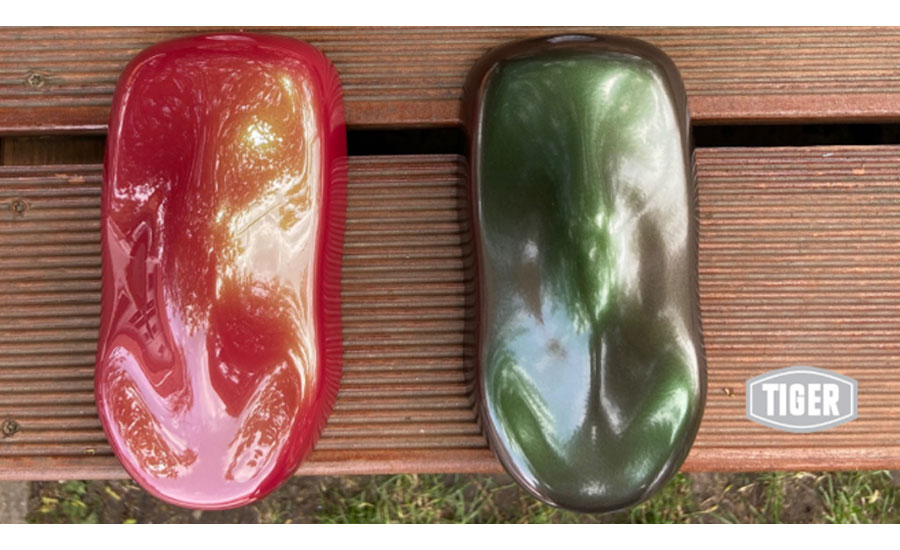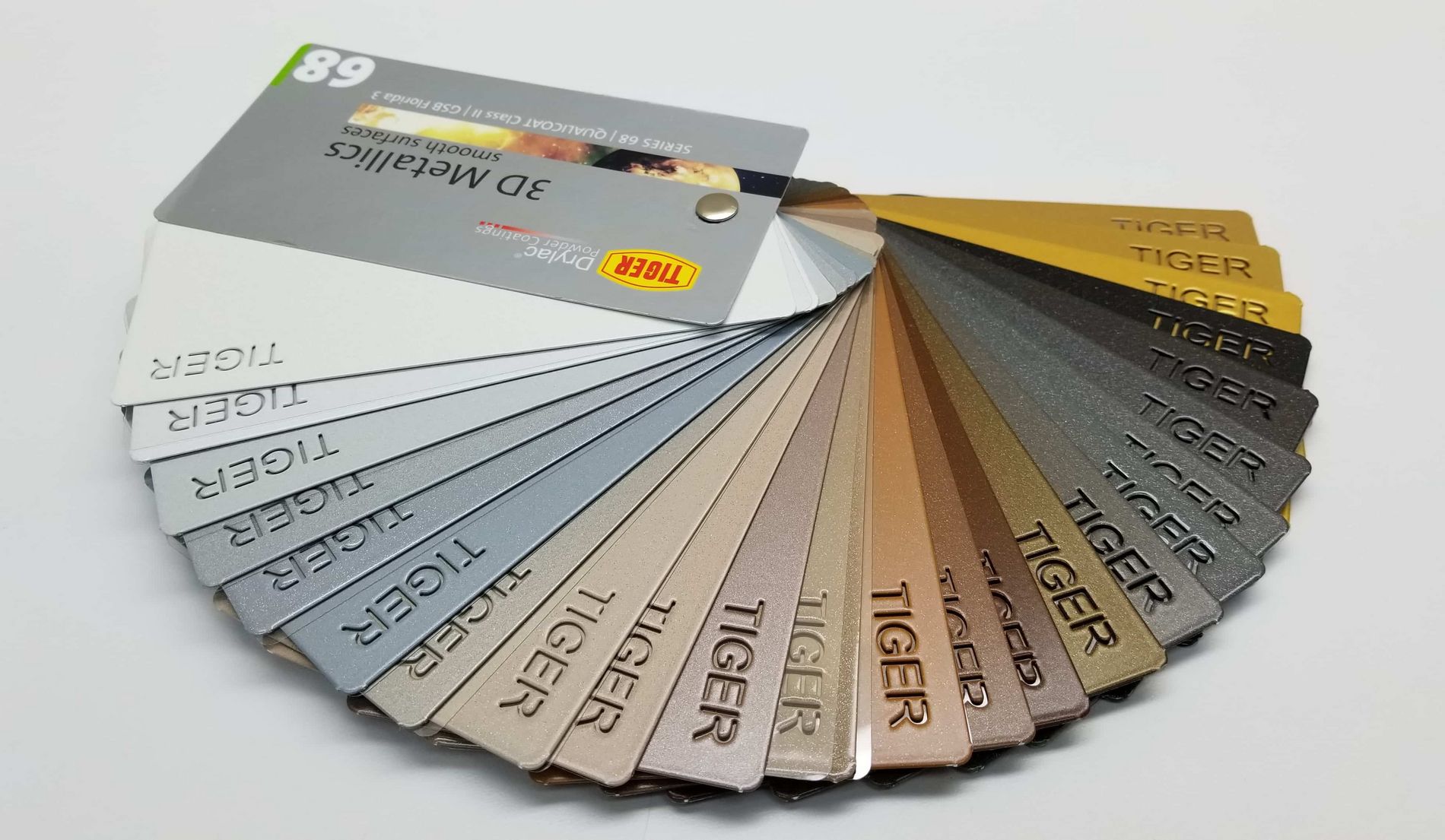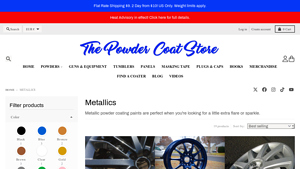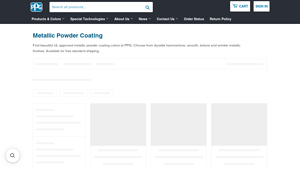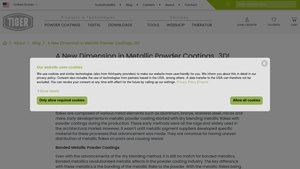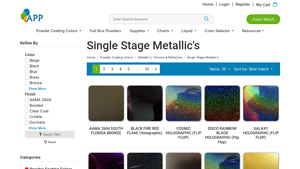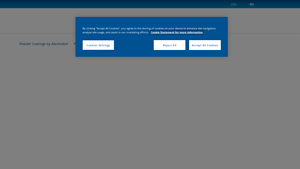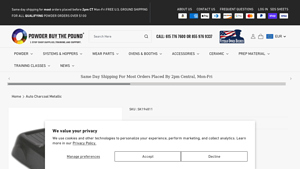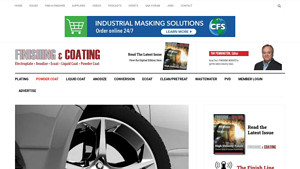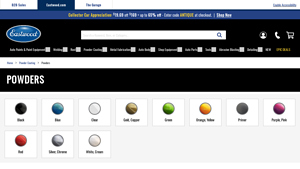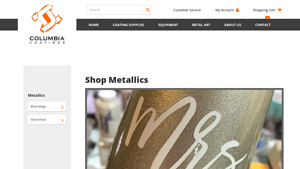Metallic Powder Coating Guide: Type, Cost, Top List…
Introduction: Navigating the Global Market for metallic powder coating
In an increasingly competitive landscape, sourcing high-quality metallic powder coating can present significant challenges for international B2B buyers. These coatings not only enhance the aesthetic appeal of products but also provide superior durability and resistance to environmental factors. This guide aims to navigate the complex global market for metallic powder coating, covering essential aspects such as types, applications, supplier vetting, and cost considerations. By delving into these topics, we equip decision-makers from Africa, South America, the Middle East, and Europe, including countries like Vietnam and Germany, with the insights needed to make informed purchasing decisions.
The comprehensive scope of this guide is designed to address the unique challenges faced by diverse industries, from automotive and architectural design to industrial applications. Readers will learn how to evaluate various coating options, understand the importance of consistent quality, and find reliable suppliers who meet international standards. Additionally, we will discuss the latest advancements in powder coating technology, including the rise of 3D metallic finishes that offer unparalleled visual effects.
By empowering B2B buyers with actionable knowledge, this guide serves as a crucial resource for those looking to optimize their procurement processes, enhance product offerings, and ultimately achieve greater success in their respective markets.
Understanding metallic powder coating Types and Variations
| Type Name | Key Distinguishing Features | Primary B2B Applications | Brief Pros & Cons for Buyers |
|---|---|---|---|
| Dry Blend Metallic Coatings | Composed of metallic flakes mixed with powder; can lead to uneven finish. | Architectural, automotive, and industrial. | Pros: Cost-effective; good for large batches. Cons: Inconsistent finish; higher rework rates. |
| Bonded Metallic Coatings | Metallic flakes are bonded to the powder for uniform application. | Automotive, industrial, and consumer goods. | Pros: Consistent quality; reduced rework. Cons: Slightly higher cost than dry blend. |
| 3D Metallic Coatings | Offers a liquid paint-like effect with depth and clarity in a single coat. | High-end consumer products, automotive, and design industries. | Pros: Exceptional aesthetics; environmentally friendly. Cons: Premium pricing; requires specialized application equipment. |
| High Gloss Metallic Coatings | Features a shiny, reflective finish that enhances visual appeal. | Retail displays, automotive, and electronics. | Pros: Eye-catching appearance; good durability. Cons: May show imperfections more easily; requires careful handling. |
| Matte Metallic Coatings | Provides a non-reflective finish with a sophisticated look. | Furniture, appliances, and architectural elements. | Pros: Unique aesthetic; hides imperfections well. Cons: Can be more susceptible to scratches; limited color options. |
What Are the Characteristics of Dry Blend Metallic Coatings?
Dry blend metallic coatings consist of metallic flakes mixed with base powder. This method is often used for cost-sensitive applications in sectors like architecture and automotive industries. However, the uneven distribution of flakes can lead to inconsistencies in finish quality, which may necessitate rework. Buyers should consider the balance between cost and quality when opting for this type.
How Do Bonded Metallic Coatings Enhance Quality?
Bonded metallic coatings improve upon the dry blend method by ensuring metallic flakes are evenly distributed throughout the powder. This results in a more consistent finish, making it ideal for automotive and industrial applications where quality is paramount. While slightly more expensive, the reduction in rework and enhanced durability make bonded coatings a preferred choice for many B2B buyers.
What Makes 3D Metallic Coatings Stand Out?
3D metallic coatings represent a significant advancement in powder coating technology, providing a depth and clarity akin to liquid paints. These coatings are particularly appealing for high-end consumer products and automotive applications where aesthetics are crucial. While the initial investment may be higher, the unique visual appeal and environmental benefits offer substantial value for businesses looking to differentiate their products.
Why Choose High Gloss Metallic Coatings?
High gloss metallic coatings are designed to deliver a shiny, reflective finish that enhances visual appeal. Commonly used in retail displays and automotive applications, these coatings not only attract attention but also provide durability. However, their tendency to showcase imperfections means that careful handling and application are essential, making them suitable for buyers who prioritize appearance.
What Are the Benefits of Matte Metallic Coatings?
Matte metallic coatings offer a sophisticated, non-reflective finish that is increasingly popular in furniture and appliance design. This type provides a unique aesthetic that can effectively hide imperfections, making it a practical choice for B2B buyers concerned with surface quality. However, buyers should be aware of potential scratch susceptibility and limited color options when selecting matte coatings for their projects.
Key Industrial Applications of metallic powder coating
| Industry/Sector | Specific Application of Metallic Powder Coating | Value/Benefit for the Business | Key Sourcing Considerations for this Application |
|---|---|---|---|
| Automotive | Wheel Rim Coatings | Enhances aesthetic appeal and durability, reduces maintenance costs | Ensure compatibility with OEM specifications and local regulations |
| Architectural & Design | Metal Facades and Structural Elements | Provides a visually striking finish while enhancing corrosion resistance | Assess local climate conditions for appropriate powder selection |
| Electronics | Enclosures for Electrical Components | Increases product longevity and reduces heat accumulation | Verify compliance with safety and environmental standards |
| Furniture | Outdoor Furniture Finishes | Improves weather resistance and aesthetic appeal, leading to higher customer satisfaction | Choose eco-friendly options to meet sustainability goals |
| Equipment Manufacturing | Industrial Machinery Parts | Enhances wear resistance and extends equipment lifespan | Consider bulk purchasing for cost efficiency and supply chain reliability |
How is Metallic Powder Coating Used in the Automotive Sector?
In the automotive industry, metallic powder coating is extensively applied to wheel rims, offering both aesthetic enhancement and functional durability. This coating not only provides a sleek, attractive finish but also improves resistance to scratches, corrosion, and environmental damage. International buyers, particularly from regions like Europe and the Middle East, should ensure that the coatings meet specific OEM specifications and local regulations, which may vary significantly across markets.
What are the Applications in Architectural & Design?
Metallic powder coating is a popular choice for architectural applications, particularly for metal facades and structural elements. This type of coating offers a visually striking finish that can significantly enhance the overall design of buildings while providing superior corrosion resistance. Buyers in Africa and South America should consider local climate conditions when selecting powder types, as these can impact the longevity and performance of the coatings under varying environmental stresses.
How is Metallic Powder Coating Beneficial for Electronics?
In the electronics sector, metallic powder coating is used for enclosures of electrical components, helping to improve product longevity and functionality. The coating aids in heat dissipation, which is critical for maintaining optimal performance in electronic devices. B2B buyers must ensure that the coatings comply with relevant safety and environmental standards, particularly in stringent markets like Germany, where regulations can be more rigorous.
What Advantages Does it Offer for Furniture?
For the furniture industry, particularly outdoor furniture, metallic powder coating is employed to enhance weather resistance and aesthetic appeal. This application leads to higher customer satisfaction and reduced maintenance costs over time. International buyers should prioritize eco-friendly powder options to align with growing sustainability goals, especially in European markets where environmental regulations are increasingly emphasized.
How is it Applied in Equipment Manufacturing?
In equipment manufacturing, metallic powder coating is applied to various industrial machinery parts to enhance wear resistance and prolong equipment lifespan. This application not only reduces downtime due to maintenance but also improves the overall efficiency of operations. Buyers should consider bulk purchasing strategies to optimize cost efficiency and ensure a reliable supply chain, particularly in regions where sourcing materials can be challenging.
3 Common User Pain Points for ‘metallic powder coating’ & Their Solutions
Scenario 1: Difficulty Achieving Consistent Finish Quality
The Problem: B2B buyers often struggle with achieving a consistent finish when using metallic powder coatings. Variability in the application process—such as inconsistent spray patterns, varying environmental conditions, or differences in equipment—can lead to uneven distribution of metallic flakes. This inconsistency not only affects the aesthetic appeal of the coated products but can also lead to costly rework and customer dissatisfaction.
The Solution: To ensure a consistent finish, buyers should invest in high-quality bonded metallic powders, which offer superior flake distribution compared to traditional dry blended powders. When sourcing these products, it is essential to collaborate with reputable suppliers who can provide detailed technical data sheets and application guidelines. Additionally, implementing standardized application procedures, such as using calibrated spray guns and maintaining consistent environmental conditions, will help achieve uniform results. Regular training for applicators on best practices can further enhance quality control and reduce the likelihood of defects.
Scenario 2: Limited Color Options and Customization Challenges
The Problem: Many B2B buyers encounter limitations in color options and customization when dealing with metallic powder coatings. This can be particularly challenging for industries such as automotive or consumer goods, where brand-specific colors are crucial. The inability to access a wide range of shades or to match specific color requirements can hinder project timelines and lead to unsatisfactory outcomes.
The Solution: To overcome this issue, buyers should seek suppliers that offer extensive color libraries and customization options. It’s beneficial to request custom color matching services, where suppliers can formulate a specific shade that aligns with the buyer’s branding needs. Additionally, leveraging color swatches and samples before placing bulk orders can help ensure that the final product meets expectations. Establishing a strong relationship with suppliers can also facilitate quicker turnaround times for custom orders and provide access to the latest advancements in metallic powder technology.
Scenario 3: Environmental and Safety Compliance Concerns
The Problem: Compliance with environmental regulations and safety standards is a growing concern for B2B buyers in the metallic powder coating industry. Traditional solvent-based coatings often emit harmful VOCs (volatile organic compounds), leading to regulatory scrutiny and potential fines. Buyers may feel overwhelmed by the need to switch to more environmentally friendly options while maintaining product quality.
The Solution: Transitioning to powder coating technologies that are compliant with environmental regulations can be a strategic advantage. Buyers should prioritize sourcing eco-friendly metallic powder coatings that are free from harmful solvents and comply with local and international environmental standards. Engaging with suppliers who can provide certifications and documentation related to VOC emissions will help buyers ensure compliance. Additionally, investing in proper ventilation systems and training employees on safety protocols will enhance workplace safety and mitigate health risks associated with powder coating processes. By taking these proactive steps, buyers can align their operations with sustainability goals and build a reputation as environmentally responsible manufacturers.
Strategic Material Selection Guide for metallic powder coating
What Are the Key Materials Used in Metallic Powder Coating?
Metallic powder coatings are composed of various materials, each offering unique properties and performance characteristics. Understanding these materials is crucial for B2B buyers looking to optimize their coating processes and end-product quality. Here, we analyze four common materials used in metallic powder coatings: aluminum, polyester, epoxy, and polyurethane.
How Does Aluminum Influence Metallic Powder Coating Performance?
Aluminum is widely used in metallic powder coatings due to its lightweight and reflective properties. It enhances the visual appeal of coated surfaces, giving them a metallic finish. Aluminum flakes provide excellent corrosion resistance and can withstand high temperatures, making them suitable for various applications, including automotive and architectural finishes.
Pros: Aluminum-based coatings are durable and offer a high degree of flexibility in color and finish options. They are also relatively easy to apply and provide consistent results.
Cons: The cost of aluminum flakes can be higher compared to other materials, which may affect overall project budgets. Additionally, the application process may require specialized equipment to achieve optimal results.
Impact on Application: Aluminum powder coatings are compatible with a wide range of substrates, including metals and plastics. However, they may require a primer or base coat for enhanced adhesion on certain surfaces.
Considerations for International Buyers: Compliance with standards such as ASTM and DIN is essential, especially for buyers in Europe and the Middle East. Buyers should also be aware of regional preferences for specific finishes and colors, which can vary significantly.
What Role Does Polyester Play in Metallic Powder Coating?
Polyester resins are another popular choice for metallic powder coatings, known for their excellent weather resistance and color retention. They provide a glossy finish that is aesthetically pleasing and durable against UV exposure, making them ideal for outdoor applications.
Pros: Polyester coatings are cost-effective and offer good mechanical properties, including impact resistance. They are widely available and come in a variety of colors and finishes.
Cons: While polyester coatings are durable, they may not perform as well in extreme temperatures compared to other materials. Additionally, they can be less resistant to certain chemicals, which may limit their use in industrial applications.
Impact on Application: Polyester coatings are suitable for a variety of substrates but may require specific surface preparation to ensure optimal adhesion. They are commonly used in the automotive, furniture, and architectural sectors.
Considerations for International Buyers: Buyers should consider local regulations regarding VOC emissions, especially in Europe, where stringent environmental standards are in place. Understanding the local market’s color preferences can also enhance customer satisfaction.
How Do Epoxy Coatings Enhance Metallic Powder Coating Applications?
Epoxy resins are known for their superior adhesion and chemical resistance, making them ideal for industrial applications where durability is paramount. They provide a hard, glossy finish that enhances the metallic effect of the coating.
Pros: Epoxy coatings are highly resistant to corrosion and chemicals, making them suitable for harsh environments. They also provide excellent adhesion to various substrates, ensuring long-lasting performance.
Cons: The primary drawback of epoxy coatings is their sensitivity to UV light, which can lead to yellowing and degradation over time. This limits their suitability for outdoor applications without a protective topcoat.
Impact on Application: Epoxy coatings work well on metals and plastics but may require a primer for optimal adhesion. They are commonly used in industrial settings, such as machinery and equipment.
Considerations for International Buyers: Compliance with international standards, such as JIS in Japan, is crucial for buyers in Asia. Additionally, buyers should be aware of the potential need for a topcoat to enhance UV resistance in outdoor applications.
What Advantages Does Polyurethane Offer in Metallic Powder Coating?
Polyurethane coatings are renowned for their flexibility and resistance to abrasion and chemicals. They provide a high-gloss finish that enhances the metallic appearance and are suitable for a wide range of applications, including automotive and consumer goods.
Pros: Polyurethane coatings offer excellent durability and can withstand harsh environmental conditions. They also provide a wide range of color options and finishes.
Cons: The application process can be more complex and may require specific equipment. Additionally, polyurethane coatings can be more expensive than other options, affecting project budgets.
Impact on Application: These coatings are compatible with various substrates but may require specific surface preparation. They are suitable for both indoor and outdoor applications, providing versatility.
Considerations for International Buyers: Buyers should be aware of regional standards regarding chemical resistance and environmental compliance. Understanding the local market’s preferences can also guide material selection.
Summary Table of Material Selection for Metallic Powder Coating
| Material | Typical Use Case for metallic powder coating | Key Advantage | Key Disadvantage/Limitation | Relative Cost (Low/Med/High) |
|---|---|---|---|---|
| Aluminum | Automotive and architectural finishes | Excellent corrosion resistance | Higher cost compared to alternatives | High |
| Polyester | Outdoor furniture and architectural elements | Cost-effective and durable | Less resistant to extreme temperatures | Medium |
| Epoxy | Industrial machinery and equipment | Superior adhesion and chemical resistance | UV sensitivity limits outdoor use | Medium |
| Polyurethane | Automotive and consumer goods | High durability and flexibility | Complex application process | High |
This strategic material selection guide aims to equip international B2B buyers with the necessary insights to make informed decisions regarding metallic powder coating materials, ensuring optimal performance and compliance with regional standards.
In-depth Look: Manufacturing Processes and Quality Assurance for metallic powder coating
What Are the Key Stages in the Manufacturing Process of Metallic Powder Coating?
The manufacturing process of metallic powder coatings encompasses several critical stages, each essential for producing high-quality coatings that meet diverse industry needs.
-
Material Preparation: The initial phase involves sourcing and preparing raw materials, including resins, pigments, and metallic flakes. The quality of these materials significantly impacts the final product’s performance and aesthetics. For metallic coatings, the metallic flakes (such as aluminum or bronze) must be finely processed to ensure they disperse evenly throughout the powder. This often involves grinding and sieving to achieve the desired particle size distribution.
-
Forming: In this stage, the prepared materials are blended to create a homogeneous powder mixture. Techniques like dry blending or bonding are employed. Dry blending involves mixing the metallic flakes with the base powder, while bonded metallics combine the flakes with the powder during the manufacturing process, enhancing consistency and reducing the risk of uneven finishes. The choice of technique can influence both the visual appeal and durability of the coating.
-
Assembly: After forming, the powder is typically packaged and prepared for shipping. This includes ensuring that the product is free from contaminants and properly labeled. For B2B buyers, understanding the assembly process can provide insights into how the final product is handled and stored, which can affect quality during transportation.
-
Finishing: The finishing stage includes quality checks and possibly the application of additional treatments to enhance performance characteristics. This may involve applying a clear topcoat or other protective layers. Advanced technologies, such as 3D metallic coatings, provide an innovative finish that mimics the depth and visual appeal of liquid paints, offering a competitive edge in the market.
How Is Quality Assurance Implemented in Metallic Powder Coating Manufacturing?
Quality assurance (QA) in the metallic powder coating industry is vital for ensuring that products meet international standards and customer expectations. Implementing robust QA processes helps mitigate risks and enhances product reliability.
-
International Standards Compliance: Many manufacturers adhere to international quality management standards such as ISO 9001, which sets criteria for an effective quality management system. Compliance with these standards indicates a commitment to consistent quality and continuous improvement. For B2B buyers, verifying a supplier’s ISO certification can be a crucial step in the supplier selection process.
-
Industry-Specific Certifications: Depending on the application, additional certifications may be required. For example, in the automotive sector, compliance with standards like API (American Petroleum Institute) can be necessary. B2B buyers should inquire about these certifications to ensure that the products meet specific industry requirements.
-
Quality Control Checkpoints: The quality control (QC) process typically includes several checkpoints:
– Incoming Quality Control (IQC): This phase involves inspecting raw materials upon arrival to ensure they meet specified standards.
– In-Process Quality Control (IPQC): Throughout the manufacturing process, various tests are conducted to monitor quality at different stages. This can include particle size analysis and visual inspections to check for defects.
– Final Quality Control (FQC): Before shipping, the final product undergoes thorough testing to ensure it meets both internal specifications and customer requirements. This can involve adhesion tests, gloss measurements, and performance evaluations.
What Common Testing Methods Are Used in Quality Assurance for Metallic Powder Coating?
Testing methods are critical for validating the quality of metallic powder coatings. Commonly employed techniques include:
- Adhesion Testing: This assesses how well the coating adheres to the substrate. Methods such as the cross-cut test or peel test are often used.
- Gloss Measurement: The gloss level can significantly affect the visual appeal of metallic coatings. Gloss meters provide quantitative measurements to ensure consistency across batches.
- Weathering Tests: These tests evaluate the coating’s resistance to environmental factors, including UV exposure and humidity. Such assessments are crucial for coatings intended for outdoor applications.
- Thickness Measurement: Ensuring the appropriate thickness of the coating is vital for performance. Techniques like ultrasonic thickness gauges are often utilized.
How Can B2B Buyers Verify Supplier Quality Control?
For international B2B buyers, especially those from regions such as Africa, South America, the Middle East, and Europe, verifying supplier quality control is essential to mitigate risks. Here are actionable steps to ensure supplier reliability:
-
Conduct Supplier Audits: Regular audits of suppliers can provide insights into their manufacturing processes and quality control measures. Buyers should consider requesting access to audit reports or even conducting onsite visits to assess compliance with quality standards.
-
Request Quality Control Reports: Suppliers should provide documentation detailing their quality control processes, including test results and certifications. A thorough review of these documents can help buyers understand the supplier’s commitment to quality.
-
Engage Third-Party Inspection Services: Employing independent inspectors can provide an objective assessment of a supplier’s quality control practices. This can be particularly beneficial for buyers who may not have the resources to conduct comprehensive audits themselves.
What Are the Quality Control Nuances for International B2B Buyers?
International B2B buyers face unique challenges regarding quality control. Here are key considerations:
-
Cultural Differences: Understanding local manufacturing practices and quality expectations can help buyers navigate potential discrepancies. Engaging local representatives can facilitate communication and help bridge cultural gaps.
-
Regulatory Compliance: Each region may have distinct regulations governing product quality. Buyers should ensure that suppliers comply with local standards to avoid issues with customs or market acceptance.
-
Logistics and Supply Chain Management: The global supply chain can introduce additional quality risks. Establishing robust logistics protocols and monitoring shipments can help mitigate potential quality issues arising from transportation.
In summary, a thorough understanding of the manufacturing processes and quality assurance measures for metallic powder coating not only equips B2B buyers with the necessary insights to make informed purchasing decisions but also fosters stronger partnerships with suppliers committed to quality excellence.
Practical Sourcing Guide: A Step-by-Step Checklist for ‘metallic powder coating’
In the competitive landscape of metallic powder coating, making informed procurement decisions is essential for ensuring quality, cost-effectiveness, and compliance with industry standards. This checklist is designed to guide B2B buyers through the sourcing process, helping them identify suitable suppliers and products tailored to their specific needs.
Step 1: Define Your Technical Specifications
Establishing clear technical specifications is the foundation of effective sourcing. This includes determining the desired color, finish, and performance characteristics of the metallic powder coating. Consider factors such as UV resistance, corrosion resistance, and the specific application method (e.g., electrostatic spray).
- Tip: Create a detailed specification sheet to share with potential suppliers, which helps in obtaining accurate quotes.
Step 2: Research Potential Suppliers
Conduct thorough research on potential suppliers to build a shortlist of credible options. Look for manufacturers with a proven track record in the metallic powder coating industry, especially those with experience in your specific market region.
- Action Item: Utilize online directories, industry forums, and trade shows to gather information about suppliers.
Step 3: Verify Supplier Certifications
Before making a commitment, ensure that your chosen suppliers hold the necessary certifications and comply with international quality standards. Certifications such as ISO 9001 can indicate a commitment to quality management and consistent product delivery.
- Why It Matters: Certifications can help mitigate risks associated with product quality and ensure compliance with local regulations in your target markets.
Step 4: Request Samples for Evaluation
Request samples of the metallic powder coatings you are considering. This allows you to assess the quality, color accuracy, and finish of the products firsthand.
- Consideration: Evaluate the samples under various lighting conditions to ensure they meet your expectations and requirements.
Step 5: Assess Production Capabilities and Lead Times
Understanding the production capabilities of your suppliers is crucial for planning and inventory management. Inquire about their manufacturing processes, capacity, and typical lead times for orders.
- Importance: Reliable lead times are essential to maintaining your production schedules and meeting customer demand.
Step 6: Evaluate Pricing and Payment Terms
Compare pricing structures among suppliers, keeping in mind that the cheapest option is not always the best. Consider total cost factors, including shipping, tariffs, and payment terms.
- Negotiation Tip: Be prepared to negotiate payment terms to improve cash flow, especially if you are placing large orders.
Step 7: Establish a Quality Assurance Process
Once you select a supplier, set up a quality assurance process to monitor the quality of incoming materials. This could involve establishing acceptance criteria and conducting regular audits of the supplier’s production processes.
- Outcome: A robust quality assurance process helps ensure that the metallic powder coatings consistently meet your specifications and reduces the risk of defects.
By following this checklist, B2B buyers can navigate the complexities of sourcing metallic powder coating more effectively, ensuring that they partner with suppliers who can deliver the quality and performance required for their applications.
Comprehensive Cost and Pricing Analysis for metallic powder coating Sourcing
What Are the Key Cost Components in Metallic Powder Coating Sourcing?
When sourcing metallic powder coatings, it is essential to understand the various cost components that contribute to the final pricing. These components typically include:
-
Materials: The primary cost driver is the raw materials used to manufacture the powder coatings. The quality and type of metallic pigments—such as aluminum, bronze, or stainless steel—can significantly impact pricing. Higher quality materials often lead to better performance and aesthetics but come with increased costs.
-
Labor: Labor costs encompass the wages of skilled workers involved in the manufacturing and application processes. This includes production staff, quality control personnel, and logistics teams. Labor costs can vary significantly based on the region, with higher wages often found in developed markets.
-
Manufacturing Overhead: This includes costs related to facility maintenance, utilities, and equipment depreciation. Efficient manufacturing processes can help reduce these overhead costs, making it crucial to select suppliers with optimized operations.
-
Tooling: Tooling costs refer to the expenses incurred in the creation and maintenance of molds and machinery used in the powder coating process. Custom formulations or unique applications may require specialized tooling, which can add to the overall cost.
-
Quality Control (QC): Ensuring product quality is paramount, especially for B2B buyers. QC processes involve testing and inspection, which incur additional costs. Suppliers with robust QC protocols may charge higher prices, but they also provide assurance of product consistency and reliability.
-
Logistics: Transportation and shipping costs can vary based on the supplier’s location and the buyer’s destination. Factors such as shipping distance, mode of transport, and associated tariffs can influence overall logistics costs.
-
Margin: The supplier’s margin is the profit they add to their costs. This margin can vary widely depending on the supplier’s market positioning and the competitive landscape.
What Influences Pricing for Metallic Powder Coatings?
Several factors can influence the pricing of metallic powder coatings:
-
Volume and Minimum Order Quantity (MOQ): Suppliers often provide discounts for bulk purchases. Understanding the MOQ can help buyers negotiate better terms and pricing.
-
Specifications and Customization: Customized formulations or unique specifications typically command higher prices. Buyers should clearly define their requirements to obtain accurate quotes.
-
Quality and Certifications: Products that meet specific industry certifications or standards may come at a premium. Buyers should assess the necessity of these certifications based on their application needs.
-
Supplier Factors: The supplier’s reputation, experience, and market presence can significantly impact pricing. Established suppliers may charge more due to their reliability and service levels.
-
Incoterms: The terms of shipment and delivery can affect pricing. Understanding Incoterms can help buyers gauge their total costs, including duties and taxes.
What Are the Best Negotiation Tips for B2B Buyers?
-
Leverage Volume: Buyers should consider consolidating orders to meet higher MOQs, thus benefiting from volume discounts.
-
Analyze Total Cost of Ownership (TCO): Beyond the initial purchase price, consider factors such as logistics, quality assurance, and potential rework costs. A lower initial price might lead to higher TCO if quality is compromised.
-
Research Market Prices: Understanding the average market pricing for similar products can empower buyers during negotiations. Use this information to challenge suppliers who offer inflated prices.
-
Foster Long-term Relationships: Building strong relationships with suppliers can yield better pricing and terms over time. Trust and loyalty often lead to preferential pricing.
-
Stay Informed on International Pricing Nuances: For buyers from Africa, South America, the Middle East, and Europe, it is crucial to consider currency fluctuations, regional tariffs, and trade agreements, which can all impact the final pricing of metallic powder coatings.
Conclusion
Navigating the cost structure and pricing of metallic powder coatings requires a comprehensive understanding of various factors from materials to supplier relationships. By leveraging this knowledge, B2B buyers can make informed decisions, optimize their sourcing strategies, and ultimately enhance their purchasing power in the international market.
Alternatives Analysis: Comparing metallic powder coating With Other Solutions
Exploring Alternatives to Metallic Powder Coating
In the competitive landscape of surface finishing, it’s crucial for B2B buyers to evaluate various coating technologies to find the most effective solution for their specific applications. Metallic powder coating is a popular choice due to its aesthetic appeal and durability, but alternative methods may also meet the requirements of different industries and applications. This section compares metallic powder coating with two viable alternatives: liquid paint and anodizing, helping buyers make informed decisions.
| Comparison Aspect | Metallic Powder Coating | Liquid Paint | Anodizing |
|---|---|---|---|
| Performance | High durability, scratch-resistant, and vibrant finishes | Good finish variety but less durable | Excellent corrosion resistance; can be dyed for color |
| Cost | Moderate initial investment; cost-effective for large batches | Generally lower initial costs, but more labor-intensive | Higher initial costs; requires specialized equipment |
| Ease of Implementation | Requires specific application equipment and curing process | Easier to apply with standard spray equipment | Requires specialized anodizing tanks and processes |
| Maintenance | Minimal maintenance; resistant to chipping and fading | More frequent touch-ups needed | Low maintenance; very durable |
| Best Use Case | Automotive, architectural, and industrial applications | Furniture, appliances, and decorative items | Aerospace, automotive, and marine applications |
Liquid Paint: Advantages and Disadvantages
Liquid paint is one of the most traditional alternatives to metallic powder coating. It offers a wide variety of finishes and colors, making it a popular choice for many applications. The initial costs of liquid paint can be lower than metallic powder coating; however, the labor intensity and the need for frequent maintenance can increase the overall cost over time. Additionally, liquid paint may not provide the same level of durability or resistance to environmental factors as powder coating, making it less ideal for industrial applications where wear and tear are common.
Anodizing: Pros and Cons
Anodizing is an electrochemical process that enhances the natural oxide layer on metal surfaces, particularly aluminum. This method offers exceptional corrosion resistance and can be dyed for aesthetic purposes, providing a durable and attractive finish. However, the initial investment for anodizing equipment can be significant, and the process requires specialized knowledge and facilities. While anodized surfaces are low maintenance and highly durable, the color options may be more limited compared to metallic powder coatings, which can offer a broader spectrum of finishes and effects.
Conclusion: Choosing the Right Coating Solution
When selecting the right coating solution, B2B buyers must consider the specific requirements of their projects, including performance needs, budget constraints, and maintenance capabilities. Metallic powder coating stands out for its durability and aesthetic versatility, making it suitable for demanding environments. However, liquid paint and anodizing may be more appropriate for certain applications based on their unique benefits. By carefully analyzing these alternatives, businesses can align their coating choices with their operational goals and industry standards, ensuring optimal results for their products.
Essential Technical Properties and Trade Terminology for metallic powder coating
What Are the Key Technical Properties of Metallic Powder Coating?
When selecting metallic powder coatings for various applications, understanding their technical properties is crucial for making informed purchasing decisions. Here are some of the most significant specifications to consider:
1. Material Grade
Material grade indicates the quality and type of resin and metallic pigments used in the powder coating. Common grades include epoxy, polyester, and hybrid formulations, each offering unique performance characteristics. For instance, polyester coatings are known for their UV resistance, making them ideal for outdoor applications. Selecting the right material grade ensures the coating meets durability and aesthetic requirements, which is vital for long-term performance.
2. Film Thickness
Film thickness refers to the applied layer’s depth, typically measured in mils or microns. This property affects the coating’s durability, appearance, and protection level against corrosion and wear. For B2B buyers, understanding the optimal film thickness for specific applications can help reduce rework and prolong the lifespan of the coated product, ultimately saving costs.
3. Gloss Level
The gloss level of metallic powder coatings is a critical aesthetic property that impacts the visual appeal of the finished product. Gloss levels range from matte to high gloss, influencing not only appearance but also functionality, such as ease of cleaning. Buyers should consider the desired gloss level to ensure it aligns with their brand image and customer expectations.
4. Chemical Resistance
Chemical resistance refers to the coating’s ability to withstand exposure to various chemicals without degrading. This property is essential for applications in industrial environments where coatings may encounter solvents, oils, or cleaning agents. Understanding the chemical resistance of a coating helps buyers select products suitable for their operational conditions, reducing the risk of premature failure.
5. Adhesion Strength
Adhesion strength measures how well the powder coating bonds to the substrate material. A high adhesion strength is critical for ensuring the longevity and effectiveness of the coating. Buyers should prioritize coatings with proven adhesion properties to minimize issues such as peeling or flaking, which can lead to costly repairs and downtime.
What Are Common Trade Terms Related to Metallic Powder Coating?
Familiarity with industry terminology is essential for effective communication and decision-making in the metallic powder coating market. Here are several key terms every buyer should know:
1. OEM (Original Equipment Manufacturer)
OEM refers to companies that produce products that are later sold under another brand name. In the context of powder coating, OEMs may require specific coatings that meet their quality standards. Understanding OEM requirements can help buyers ensure compatibility and performance for their end products.
2. MOQ (Minimum Order Quantity)
MOQ is the smallest quantity of a product that a supplier is willing to sell. This term is significant for B2B buyers as it affects inventory management and cost efficiency. Knowing the MOQ helps companies plan their purchasing strategy to avoid excess stock or missed opportunities.
3. RFQ (Request for Quotation)
An RFQ is a formal document sent to suppliers requesting pricing and terms for specific products. Utilizing RFQs allows buyers to compare offers from different suppliers, ensuring they secure the best possible deal. This process is crucial for budget management and supplier selection.
4. Incoterms (International Commercial Terms)
Incoterms are a set of predefined commercial terms that clarify the responsibilities of buyers and sellers in international trade. Understanding these terms is essential for B2B transactions, as they dictate who pays for shipping, insurance, and tariffs. Familiarity with Incoterms can prevent misunderstandings and ensure smooth logistics.
5. Batch Consistency
Batch consistency refers to the uniformity of properties across different production runs of powder coating. High batch consistency is crucial for maintaining quality and performance standards in manufactured products. Buyers should prioritize suppliers with a strong reputation for consistency to ensure reliable results in their applications.
By grasping these technical properties and industry terms, B2B buyers can make more informed decisions regarding metallic powder coatings, ultimately enhancing their product offerings and operational efficiency.
Navigating Market Dynamics and Sourcing Trends in the metallic powder coating Sector
What Are the Key Trends Driving the Metallic Powder Coating Market?
The metallic powder coating market is witnessing significant growth due to several global drivers, including the increasing demand for high-quality finishes in various industries such as automotive, architecture, and consumer goods. One of the most notable trends is the shift towards advanced coating technologies, such as 3D metallic powder coatings, which offer enhanced visual effects and durability without the need for a topcoat. This innovation not only improves aesthetic appeal but also reduces production time and costs, making it an attractive option for manufacturers looking to improve efficiency.
Additionally, sustainability is becoming a critical factor in sourcing decisions. Many international B2B buyers are prioritizing suppliers who employ environmentally friendly practices and materials. The rise of bonded metallic powders, which ensure uniform distribution of metallic flakes, is also noteworthy. This technology minimizes waste and rework, providing a competitive edge in the market. Furthermore, the demand for customization is on the rise, as clients seek unique colors and finishes tailored to their specific needs, particularly in regions like Africa and South America, where local aesthetics can significantly influence purchasing decisions.
How Can Businesses Ensure Sustainability and Ethical Sourcing in Metallic Powder Coating?
Sustainability and ethical sourcing are paramount in today’s business landscape, especially in the metallic powder coating sector. The environmental impact of traditional solvent-based paints has prompted a shift towards powder coatings, which are not only more eco-friendly but also contribute to reduced emissions and waste. Buyers are increasingly seeking suppliers who offer ‘green’ certifications, indicating adherence to environmental standards and responsible sourcing practices.
Moreover, the trend towards ethical supply chains is growing, as businesses recognize the importance of transparency in their sourcing practices. This involves evaluating suppliers based on their labor practices, sourcing materials from responsible mines, and ensuring fair labor conditions. The availability of eco-friendly metallic powders, which utilize recyclable materials and sustainable production methods, is also gaining traction. By prioritizing suppliers who demonstrate a commitment to sustainability, international B2B buyers can enhance their brand reputation and meet the growing consumer demand for environmentally responsible products.
What Is the Evolution of Metallic Powder Coating Technology?
The metallic powder coating sector has evolved significantly since its inception over four decades ago. Initially, the process involved dry blending metallic flakes with base powders, which often resulted in uneven finishes and required extensive rework. However, advancements in technology have led to the development of bonded metallic powders, which enhance finish uniformity and reduce production waste.
Recent innovations, such as 3D metallic coatings, have transformed the market by providing a liquid paint-like effect that enhances depth and clarity while maintaining the benefits of powder coatings. These developments not only improve visual appeal but also align with growing sustainability trends, making them a preferred choice for manufacturers globally. This evolution reflects the industry’s responsiveness to market demands, driving further innovations that cater to diverse customer needs across various regions.
Frequently Asked Questions (FAQs) for B2B Buyers of metallic powder coating
-
How do I ensure consistent quality in metallic powder coating?
To ensure consistent quality in metallic powder coating, start by vetting suppliers with a strong reputation for quality control. Request samples to evaluate color consistency, finish, and durability. Additionally, inquire about their manufacturing processes, such as the use of bonded metallics for better distribution of metallic flakes. Regularly conducting quality audits and performance tests on coated products can further help maintain standards, ensuring that the coatings meet your industry requirements. -
What is the best metallic powder coating for outdoor applications?
For outdoor applications, choose metallic powder coatings that offer superior weather resistance and UV stability. Look for products specifically designed for exterior use, such as those containing polyester resins, which provide excellent durability against fading and corrosion. Brands offering 3D metallic coatings can also enhance visual appeal while maintaining protection against environmental factors. Always confirm the coating’s specifications and suitability for your specific climate conditions. -
How can I customize metallic powder coating colors?
Most reputable suppliers offer customization options for metallic powder coating colors. You can request specific color matches or unique formulations based on your project’s needs. Ensure to provide color samples or Pantone references for accurate matching. Additionally, inquire about minimum order quantities for custom colors and the lead time required for production to avoid delays in your supply chain. -
What are the typical minimum order quantities (MOQs) for metallic powder coatings?
Minimum order quantities for metallic powder coatings vary by supplier and product type. Generally, MOQs can range from 10 kg to several hundred kilograms, depending on the complexity of the color and finish. It’s advisable to discuss your specific requirements with potential suppliers to understand their MOQ policies. Some suppliers may offer flexibility or allow for smaller orders under certain conditions, especially for established business relationships. -
What payment terms should I expect when sourcing metallic powder coatings?
Payment terms for sourcing metallic powder coatings can vary widely among suppliers. Common arrangements include upfront payments, 30% deposits with the balance upon delivery, or net 30/60 days. It’s essential to discuss payment terms upfront and ensure they align with your financial capabilities. Additionally, consider negotiating terms that protect your investment, such as escrow services or letters of credit, especially for large international transactions. -
How do I vet suppliers for metallic powder coatings?
To effectively vet suppliers for metallic powder coatings, start by researching their reputation within the industry. Check online reviews, customer testimonials, and case studies. Request certifications and compliance documentation to ensure they meet international standards. Additionally, ask for references from previous clients and assess their manufacturing capabilities, including quality control processes. A site visit may also be beneficial if feasible, allowing you to evaluate their operational standards firsthand. -
What logistics considerations should I keep in mind when importing metallic powder coatings?
When importing metallic powder coatings, consider logistics factors such as shipping methods, lead times, and customs regulations specific to your region. It’s crucial to work with freight forwarders experienced in handling chemical products to navigate complex import requirements. Ensure that the supplier provides necessary documentation, including safety data sheets and compliance certificates, to facilitate smooth customs clearance. Additionally, factor in storage conditions upon arrival, as certain coatings may require specific temperature or humidity controls. -
What are the environmental considerations when using metallic powder coatings?
Metallic powder coatings are generally more environmentally friendly than traditional liquid paints due to their low volatile organic compound (VOC) emissions. However, it’s essential to ensure that the coatings you choose comply with local environmental regulations and standards. Inquire about the supplier’s sustainability practices, such as the use of recyclable materials and waste management protocols. Opting for products that utilize eco-friendly resins and pigments can further enhance your commitment to sustainability in your operations.
Important Disclaimer & Terms of Use
⚠️ Important Disclaimer
The information provided in this guide, including content regarding manufacturers, technical specifications, and market analysis, is for informational and educational purposes only. It does not constitute professional procurement advice, financial advice, or legal advice.
While we have made every effort to ensure the accuracy and timeliness of the information, we are not responsible for any errors, omissions, or outdated information. Market conditions, company details, and technical standards are subject to change.
B2B buyers must conduct their own independent and thorough due diligence before making any purchasing decisions. This includes contacting suppliers directly, verifying certifications, requesting samples, and seeking professional consultation. The risk of relying on any information in this guide is borne solely by the reader.
Top 9 Metallic Powder Coating Manufacturers & Suppliers List
1. The Powder Coat Store – Sterling Charcoal Gunmetal Powder Coating Paint
Domain: thepowdercoatstore.com
Registered: 2013 (12 years)
Introduction: [{‘name’: ‘Sterling Charcoal Gunmetal Powder Coating Paint’, ‘weight’: ‘1 LB’, ‘price’: ‘From $9.99’, ‘rating’: ‘5.0 / 5.0’, ‘reviews’: ‘5 total reviews’}, {‘name’: ‘Midnight Blue Metallic Powder Coating Paint’, ‘weight’: ‘1 LB’, ‘price’: ‘From $9.99’, ‘rating’: ‘4.86 / 5.0’, ‘reviews’: ‘7 total reviews’}, {‘name’: ‘Metallic Silver Sparkle Powder Coating Paint’, ‘weight’: ‘1 LB’, ‘price’: ‘From $7…
2. PPG – Metallic Powder Coating
Domain: powdercoatings.ppg.com
Registered: 1990 (35 years)
Introduction: Metallic Powder Coating by PPG offers UL approved metallic powder coating colors in various finishes including durable hammertone, smooth, texture, and wrinkle. The product is available with free standard shipping.
3. TIGER – TIGER Drylac 3D Metallic Powder Coatings
Domain: tiger-coatings.com
Registered: 2000 (25 years)
Introduction: TIGER Drylac 3D Metallic Powder Coatings offer a liquid paint-like effect with stunning depth, spatial clarity, and brightness visible from various angles. These coatings are designed to be super-durable and do not require a topcoat, reducing rework and enhancing transfer efficiency. The technology utilizes bonded metallic flakes for a homogeneous finish and improved batch consistency. 3D Metallic…
4. All Powder Paints – Single Stage Metallics
Domain: allpowderpaints.com
Registered: 2011 (14 years)
Introduction: Single Stage Metallic’s are a category of powder coating colors offered by All Powder Paints. They include various finishes such as standard metallics, neon, luminous, and glow-in-the-dark options. The product line is suitable for a range of applications, including automotive, agricultural, and construction. Specific products within this category may vary in terms of color and finish, and they are…
5. Interpon – Metallic-Effect Powder Coatings
Domain: interpon.com
Registered: 1997 (28 years)
Introduction: Interpon’s collection of metallic-effect powder coatings offers a range of colors that mimic various metals such as copper, steel, nickel, silver, gold, and iron. These coatings provide a modern aesthetic while ensuring minimal environmental impact and maximum durability. They are suitable for use in architectural designs, furniture, lighting, and vehicles. The coatings are VOC-free, easy to apply…
6. Powder Buy The Pound – Auto Charcoal Metallic Powder Coating
Domain: powderbuythepound.com
Registered: 2006 (19 years)
Introduction: Auto Charcoal Metallic Powder Coating
7. Finishing and Coating – Metallic Powder Coatings
Domain: finishingandcoating.com
Registered: 2020 (5 years)
Introduction: Metallics are powder coatings with a metallic or sparkle effect, typically made from aluminum flake or mica. There are two types: bonded and unbonded. Bonded metallics have pigments that adhere to powder coating particles, resulting in a smoother application and better performance, but are more expensive and have a minimum order size. Unbonded metallics are cheaper and available in smaller batches…
8. Eastwood – Powder Coating Powders
Domain: eastwood.com
Registered: 1995 (30 years)
Introduction: Eastwood offers a variety of powder coating powders suitable for different applications. The powders are available in various colors and finishes, including gloss, satin, and matte. They are designed for durability and resistance to chipping, scratching, and fading. The products are easy to apply and provide a professional finish. Eastwood also provides detailed instructions for application and cu…
9. Columbia Coatings – Violet Night
Domain: columbiacoatings.com
Registered: 2001 (24 years)
Introduction: [{‘name’: ‘Violet Night’, ‘price’: 22.23, ‘availability’: ‘FORMULATED’, ‘item_number’: ‘M1695089’, ‘features’: [‘Single stage coating (UV stable)’, ‘Contains violet and blue metallic flakes’, ‘Great for both interior and exterior conditions’, ‘Oil and fuel resistant’, ‘High gloss finish’, ‘Salt Spray: 1000 hours pass (ASTM B-117)’, ‘Recommended Bake: 20 Minutes @ 375°F Metal Temperature’]}, {‘name…
Strategic Sourcing Conclusion and Outlook for metallic powder coating
In the evolving landscape of metallic powder coating, strategic sourcing emerges as a pivotal factor for international B2B buyers. Understanding the nuances of metallic powder types—such as bonded and 3D coatings—can significantly impact product quality and customer satisfaction. Buyers should prioritize suppliers who offer consistent batch quality and innovative solutions that enhance aesthetic appeal while adhering to environmental standards.
Moreover, the growing demand for customizable and unique finishes presents an opportunity for manufacturers to differentiate themselves in competitive markets across Africa, South America, the Middle East, and Europe. By leveraging strategic partnerships with reliable suppliers, businesses can not only optimize their sourcing processes but also tap into emerging trends that favor sustainability and advanced technology.
As the metallic powder coating market continues to expand, it is essential for B2B buyers to remain agile and informed. Engage with suppliers who offer comprehensive resources and support, ensuring a seamless integration of high-quality coatings into your production lines. The future of metallic powder coating is bright—embrace the opportunities it presents to elevate your product offerings and meet the evolving demands of your clientele.
